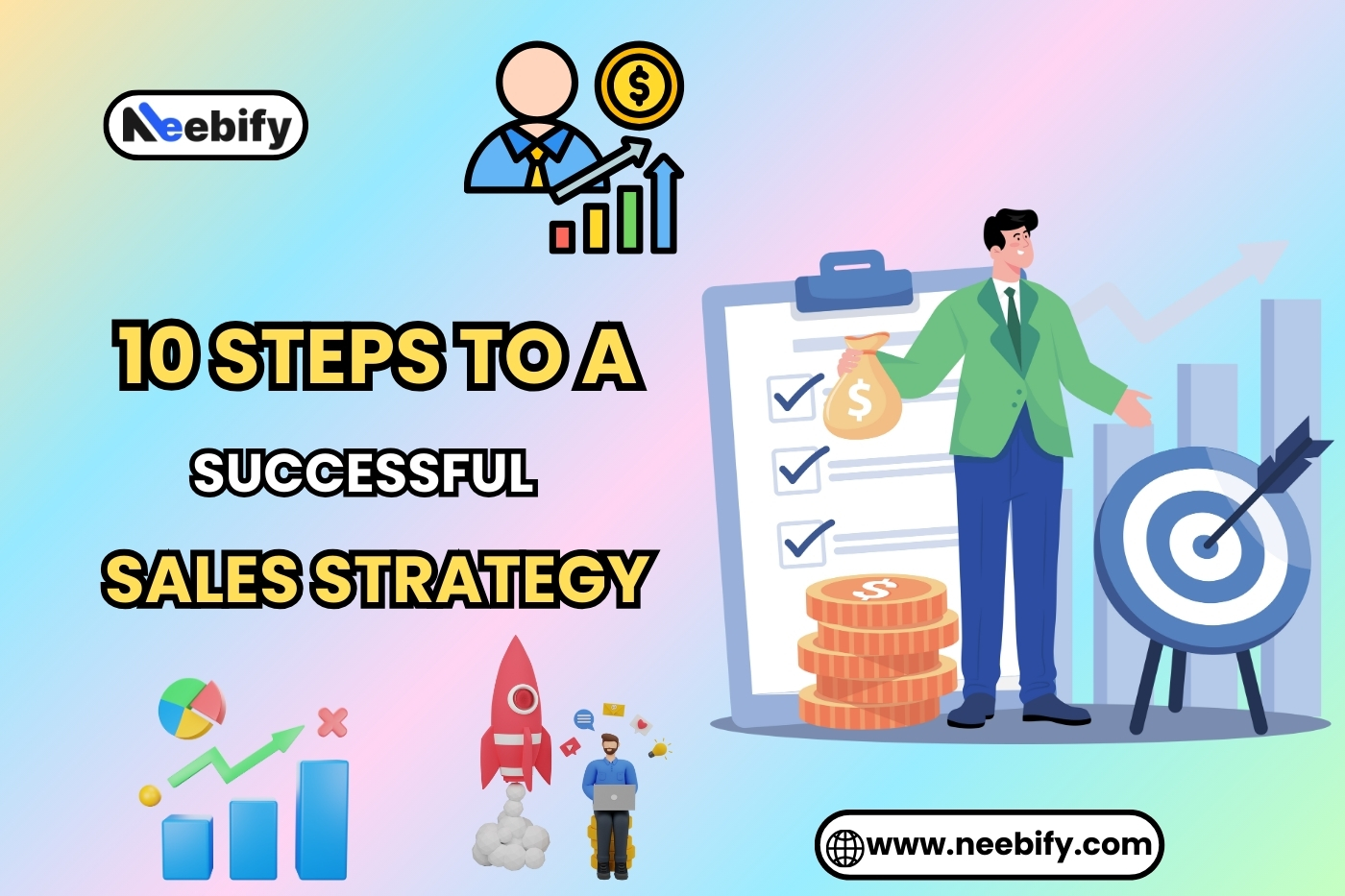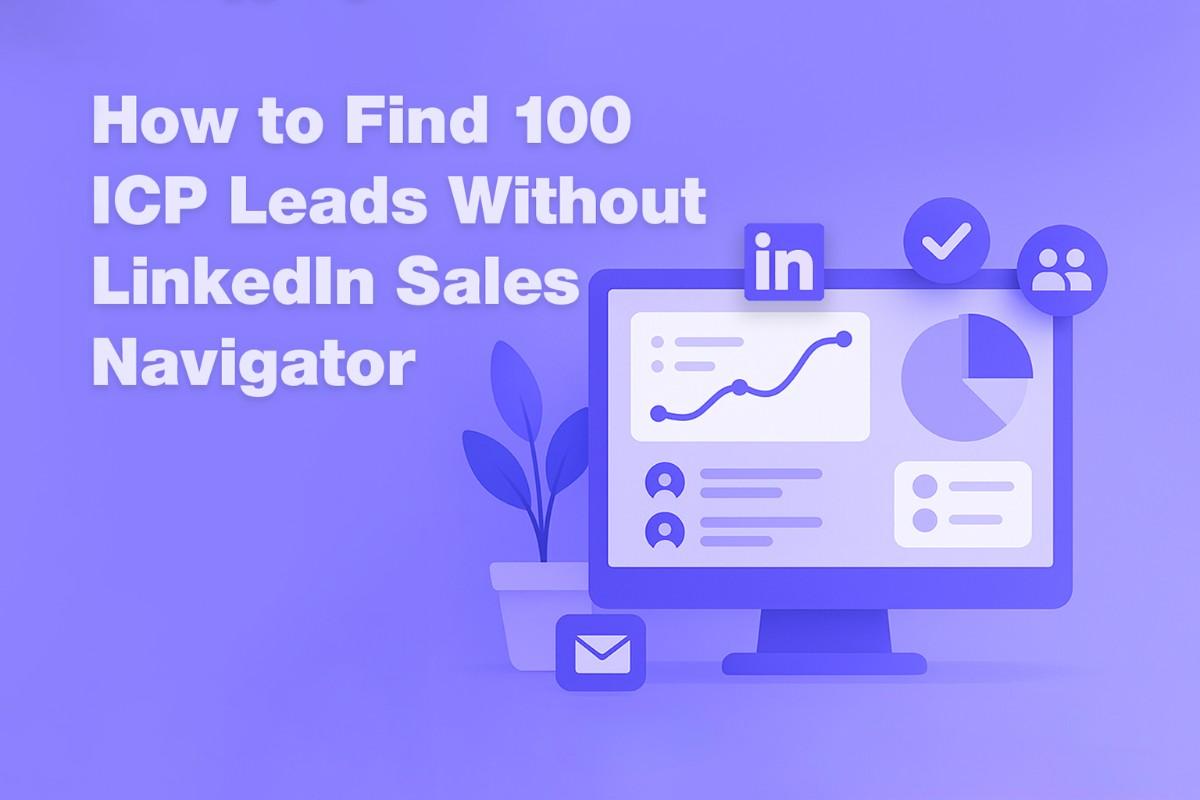Table of content
10 Steps to a Successful Sales Strategy
A well-planned sales strategy is the backbone of any business. A sales strategy is a guide that leads your sales team towards its ultimate goals of closing deals, building relationships, and constantly pushing revenue. Whatever the size of the enterprise, whether it is a startup or a large-established one, a solid sales strategy makes all the difference between the lines of success and failure. In this post, we'll be going on 10 steps to a successful sales strategy, explaining what a sales strategy is, why it matters, and how you could build one that delivers results.
What Is a Sales Strategy?
A sales plan is the way a business will set its goods or service and reach out to potential buyers to meet set revenue goals. There is a holistic approach to the overall management and optimization of the sales process, from prospecting and lead generation to actual closing and customer retention. A sales strategy is important because it can ensure how to align your sales efforts with the actual business objectives and having your team focused and productive in the pursuit of new opportunities.
In short, a sales strategy provides the framework necessary to improve sales strategy and wring out maximum performance from your sales forces. It focuses attention on how to find out about customer needs, how to choose appropriate selling tactics, and how to have systems in place to track and analyze sales performance.
Why You Need a Sales Strategy?
Having a sales strategy fulfills many purposes. If your sales are relatively less targeted, you will miss many opportunities, and this may lead to poor performance. A sales strategy framework leads businesses toward:
1. Focus on the Right Targets: A good sales strategy will direct you toward focusing your salespeople on the right customers for the product or service, meaning that your salespeople focus on leads that are most likely to buy.
2. Maximum Revenue: One of the reasons focusing on effective sales tactics yields better revenue is that it enhances the number of deals closed, thereby creating steady streams of revenue.
3. In alignment of the Sales and Marketing: A good sales strategy will always put the sales and marketing teams on the same page with good communication and aligned objectives.
4. Track and Measure Success: This allows you to track KPIs, which would enable making informed decisions about your approach based on data.
In short, a well-executed sales strategy is the secret to long-term business success.
How to Develop a Good Sales Strategy?
Having established that there is a need for a sales strategy, we can take it just a step further to outline how to create a sales strategy that will be supportive of growth and success. The following sales strategy steps are:
1. Establish Your Sales Goals: Clearly defined, measurable sales goals are the precursor to when one begins to start crafting their sales strategy. And in whatever form - whether looking to bring in new dollars by some percentage, adding a number of new customers, expanding into certain geographies, or any combination of those ends and others - your sales goals should reflect and work with your underlying business goals.
This will give your sales team concrete goals to focus on and work towards and make sure everyone is going after the same desired outcomes.
Sales strategy tip: Use SMART (Specific, Measurable, Achievable, Relevant, Time-bound) goals in developing your sales plan:.
2. Know who your target audience is: The secret to a proper sales strategy is knowing who your best customers are. Without this knowledge, you are going to waste time and resources on prospects that are not right for your product or service.
It calls for taking a lot of time to get customer personas developed from demographics, needs, pain points, and purchasing behavior. From there, you will be in a better position to tailor the sales approach to suit your unique target audience.
Sales strategy for beginners: It begins by gathering data from your existing customers, sales team, and market research about the patterns that can inform the sales efforts.
3. Analyze your competitors: One of the most important things that make up developing a successful sales strategy is the analysis of your competitors. Know how they see themselves in the market, what makes them special, and their good and bad points. Through this, you'll start noticing opportunities to differentiate your brand and bring out unique advantages.
Sales tactics for success: SWOT analysis (Strengths, Weaknesses, Opportunities, and Threats) to understand the competitive landscape better.
4. Choose a Sales Model: As you make your business decisions, an important one is the choice of a sales model that best supports your business model. There are many sales ways, some of which are:
B2B (Business-to-Business): selling to other businesses
B2C (Business-to-Consumer): selling directly to consumers
Inside Sales: Remote sales calls by phone, email, or virtual video platform.
Outside Sales: In person to prospects.
Every model comes with its own challenges. You need to choose one which aligns with your product, your customer base, and your business objectives.
5. Design a Sales Process: A Sales Process is the sequence of activities your sales team will follow in converting prospects into customers. A streamlined, repeatable process ensures no opportunity is missed and each lead nurtured aptly.
The General steps in a sales process are:
1. Lead Generation: Find and check possible customers.
2. Sales Presentation: Value proposition for your product and service.
3. Negotiation: Pricing, terms, and objection handling
4. Closing: Secure the deal
5. Follow-Up and Retention: Maintain a relationship with a customer to achieve subsequent repeat business and referrals.
Sales Planning Guide: Create activity-specific workflow solutions for each of the process stages to ensure your sales teams are all operating in the same consistent fashion and giving them the best possible chance to be successful.
6. Equip Your Sales Team with the Right Tools: Maximizing the productivity of your salesforce is achieved by arming them with those practical tools necessary for success. CRM, sales automation software, and communication tools will enable your sales team to track leads and track progress and stay organized.
Sales strategy template: Ensure that your tools will harmoniously work with one another and assist your team.
7. Lead Generation Plan Development: Creating quality leads is what any good sales strategy is all about. Plan for generating quality leads in areas such as: content marketing, paid advertising, social media outreach, email campaigns, etc. The aim here is to attract potential customers and progress through the sales funnel.
Now, sales can be increased by the following means:
Lead generation strategies have to be fine-tuned on a regular basis as a consequence of learning from various campaigns by all means possible for maximum accomplishment.
8. Training Your Sales Force: For the effective execution of the sales strategy, the sales force also needs to be adequately trained in product knowledge, techniques of sales, how to handle objections, and how to make use of sales tools.
Small Business Sales Strategy: Training That Fits Your Team's Needs And the Size of Your Business Targeted training sessions may be more effective than general sales courses for smaller teams.
9. Budget and Resources: Every sales strategy requires resources, whether it be personnel, technology, or marketing spend. Allocate a budget for your sales efforts and ensure you have the resources in place to support the execution of your strategy.
Best sales strategy: Ensure that your budget is aligned with your sales goals, and you are prepared to make adjustments as necessary to meet those targets.
10. Track, Measure, and Enhance: You will want to track how your sales strategy is working after it's in place. Use KPIs to measure the effectiveness of your sales strategy, such as:
Conversion rate
Sales cycle duration
Revenue growth
Customer acquisition cost (CAC)
Enhance your sales strategy: These metrics need to be scrutinized on an ongoing basis so you know where you always can improve.
Effective Sales Strategy Example
A successful sales strategy is, indeed, represented through the leader in sales and marketing software, inbound marketing, which has been made by HubSpot. It makes use of its content marketing, automation tools, as well as a customer-centric approach toward a relationship with lead conversion, using long-term customers. Its strategy on value addition at each stage of the customer journey leveraging data-driven insights to continually improve.
HubSpot was able to demonstrate constant growth of customer base and revenue by creating sales strategy based on educational content and by providing solution-based service for the given problem.
Conclusion
Building a successful sales strategy involves planning, research, and proper execution. By following sales strategy steps in this post you will build a great plan to target the right customers, close more deals, and add more revenue. If you are a sales strategy for beginners or an expert, success is always dependent on continuous learning, adapting your approach, and staying focused on results.
Get your next meeting in a
matter of minutes.
Free Trial
Latest
The Ultimate LinkedIn Outreach Playbook 2025
A practical, modern guide to mastering LinkedIn outreach in 2025 — learn how to boost reply rates, p
12/1/2025How to Find 100 ICP Leads Without LinkedIn Sales Navigator
Generating 100 targeted ICP leads doesn’t require LinkedIn Sales Navigator. Learn how to leverage fr
11/28/2025


